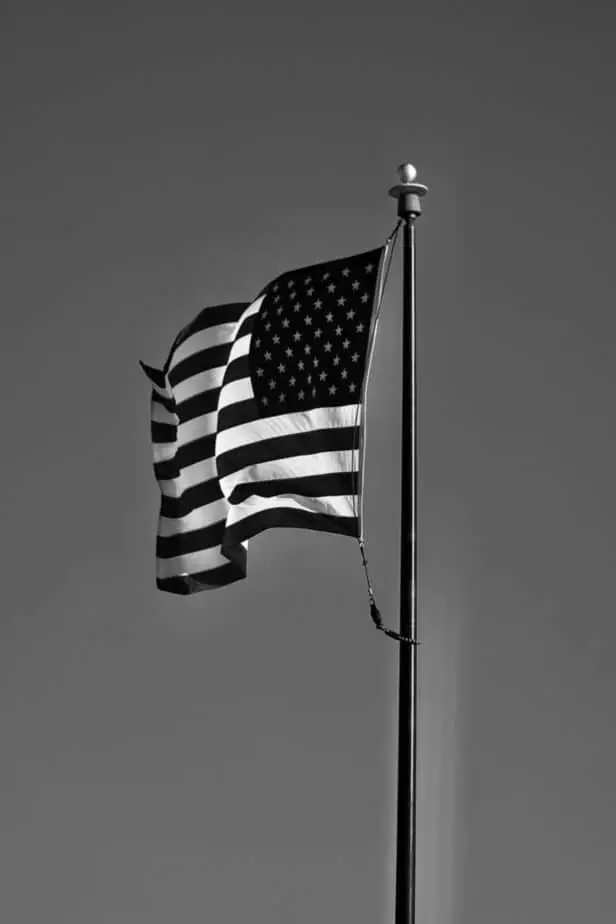
What is a black and white American flag?
The black and white American flag, also known as the “Thin Line” flag, is a versatile symbol that carries different meanings depending on its design. With black and white stripes, a black and white field of stars, and a single colored stripe, the flag is used to convey support for various groups and causes. This article delves into the flag’s symbolism, its different variations, the history behind the designs, and the ongoing debate surrounding its use.
Historical Context: Origins of the Thin Line Concept
The concept of the “Thin Line” dates back to the 1950s when Los Angeles Police Department Chief Bill Parker used the term “Thin Blue Line” to describe the role of the police in society. The idea gained wider recognition in the 1980s, following the release of a documentary by the same name, which showcased the challenges faced by law enforcement officers. The black and white flag with a colored line became a popular way to show support for various public service professionals, particularly in the context of high-profile incidents and events.
The Thin Line Flag Variations: Honoring Public Service Professionals
- Thin Blue Line Flag: This flag features a blue stripe and is a symbol of support for law enforcement officers. It represents the police’s role in maintaining order and protecting society, with the blue line signifying the separation between good and evil, order and chaos.
- Thin Red Line Flag: With a red stripe, this flag honors firefighters and acknowledges their bravery and dedication as they risk their lives to save others. The Thin Red Line flag is a symbol of solidarity with firefighters and their service.
- Thin Green Line Flag: This flag, featuring a green stripe, represents support for military personnel, border patrol agents, and park rangers. These individuals protect the country and its natural resources, and the Thin Green Line flag acknowledges their sacrifices and commitment.
- Thin Gold Line Flag: Including a gold or yellow stripe, this flag is a symbol of support for emergency communications personnel, such as 911 dispatchers. These professionals play a vital role in coordinating emergency responses and ensuring public safety.
- Thin Silver Line Flag: With a silver stripe, this flag honors correctional officers who maintain order within correctional facilities and ensure the safety of staff and inmates.
- Thin White Line Flag: Featuring a white stripe, this flag is used to show support for emergency medical services (EMS) personnel, including paramedics and emergency medical technicians. The Thin White Line flag acknowledges the lifesaving work of these professionals in responding to medical emergencies and providing critical care.
Controversy and Debate: The Thin Blue Line Flag and Its Implications
While these flags are primarily used to honor and support various public service professionals, they have also been a source of controversy, particularly the Thin Blue Line flag. Critics argue that the flag has been co-opted by far-right political groups and white supremacists, associating it with a broader, divisive agenda. Some see the flag as a symbol of opposition to the Black Lives Matter movement, which seeks to end systemic racism and police brutality against Black individuals.
In contrast, proponents of the Thin Blue Line flag maintain that it is solely a symbol of support for law enforcement and does not carry any broader political implications. They argue that the flag is a way to honor the bravery and sacrifices of police officers who risk their lives to keep communities safe.
Conclusion: Fostering Dialogue and Inclusivity
The black and white American flag and its variations serve as symbols of support for different groups of public service professionals. However, the flag’s use has also sparked controversy and debate. Understanding the various meanings behind these flags and the ongoing discussions surrounding their use is essential for promoting respectful dialogue and fostering an inclusive environment.
